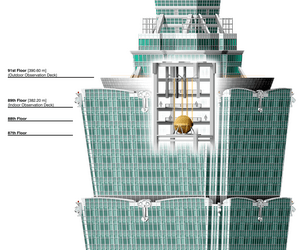Vibration control facts for kids
Vibration control is a clever way engineers make buildings safer during earthquakes. It's all about reducing how much a building shakes and moves when the ground trembles. This helps buildings stay strong and prevents damage, keeping people inside safe.

Contents
How Buildings Stay Safe: Types of Vibration Control
Engineers use different tools to control vibrations in buildings. These tools can be grouped into three main types:
- Passive devices
- Active devices
- Hybrid devices
The simplest and most common type is passive control. These devices work on their own without needing outside power. They are like built-in shock absorbers for buildings.
Passive Vibration Control
Passive control devices are very popular because they are simple and reliable. They include two main types of tools:
- Base isolators
- Seismic dampers
What are Base Isolators?
Imagine putting a building on roller skates or a giant spring. That's a bit like what base isolators do! They are special pads or bearings placed between a building's foundation and its main structure. When an earthquake hits, the ground moves, but the base isolators absorb most of the shaking. This means the building itself moves much less, protecting it from damage. They stop the strong earthquake waves from entering the building.
What are Seismic Dampers?
Seismic dampers are like the shock absorbers in a car. They are designed to soak up the energy from an earthquake's shaking. When a building starts to sway, dampers turn the shaking energy into heat, which then safely goes away. This reduces how much the building moves and helps it settle down faster after an earthquake. They make the destructive effects of the waves much smaller.
Active and Hybrid Vibration Control
While passive devices work on their own, active devices are more advanced. They use sensors and computers to detect shaking and then actively push or pull on the building to counteract the movement. Think of them like a robot that constantly balances the building.
Hybrid devices combine both passive and active methods. They use the simple, reliable features of passive systems along with the smart, responsive control of active systems. This gives buildings extra protection against strong earthquakes.


